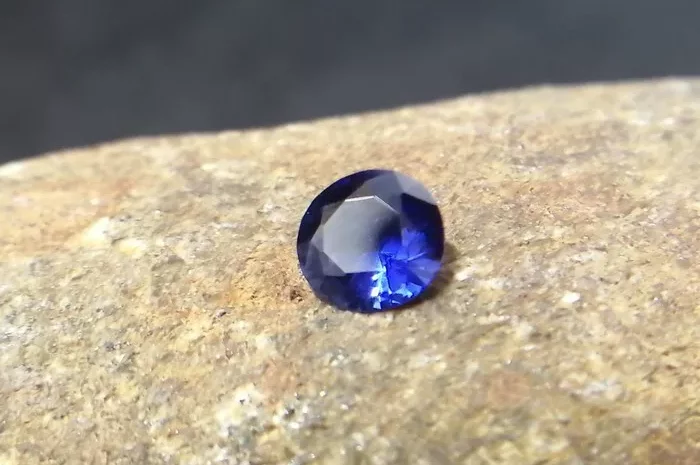Yellow sapphires are a stunning gemstone option known for their warm hues and elegant allure. Among the many sources of these beautiful gems, Blue Nile stands out as a reputable supplier in the jewelry industry. However, with the increasing popularity of yellow sapphires, it is essential to know how to identify their authenticity, especially when purchasing from online retailers like Blue Nile. This guide will provide a detailed introduction to identifying the authenticity of Blue Nile yellow sapphires, including key characteristics, testing methods, and tips for making informed purchasing decisions.
Understanding Yellow Sapphire Basics
Yellow sapphires are a type of corundum, which is a mineral belonging to the alumina family. Corundum is known for its hardness, ranking second only to diamonds on the Mohs scale of mineral hardness. Sapphires come in a variety of colors, including blue, yellow, pink, green, and orange, with yellow sapphires being one of the most sought-after hues. Yellow sapphires are valued not only for their color and clarity but also for their durability and resistance to scratching and wear.
Key Characteristics of Authentic Blue Nile Yellow Sapphire
Color: Authentic yellow sapphires from Blue Nile typically exhibit a rich, warm yellow hue with even color distribution. The color saturation and tone can vary, but the gemstone should have a natural and vibrant appearance. Be wary of sapphires that have an unnatural or artificial color, as these may be treated or enhanced.
Clarity: Clarity refers to the internal flaws or inclusions within a gemstone. Authentic yellow sapphires may have natural inclusions, such as silk, needles, or crystals, which are indicative of their natural origin. While some people prefer clearer sapphires, the presence of inclusions does not necessarily detract from the gemstone’s value, especially if they are minimal and do not detract from the overall appearance.
Cut: The cut of a yellow sapphire affects its brilliance and sparkle. Authentic Blue Nile yellow sapphires are typically cut to maximize their optical properties, such as refraction and dispersion of light. A well-cut sapphire will have a balanced proportion, smooth facets, and a symmetrical shape, contributing to its overall beauty and value.
Certification: One of the most reliable ways to verify the authenticity of a Blue Nile yellow sapphire is through certification. Reputable gemological laboratories, such as the Gemological Institute of America (GIA) or the American Gem Society (AGS), provide certification services that verify the gemstone’s characteristics, including its color, clarity, cut, and carat weight. A certified sapphire will have a unique identification number and a detailed report outlining its qualities.
Testing Methods for Authenticity
Spectral Analysis: Spectral analysis involves using a spectroscope to examine the absorption spectrum of a gemstone. Authentic yellow sapphires will exhibit specific absorption lines that are indicative of their corundum composition. This method is highly accurate but requires specialized equipment and expertise.
Thermal Conductivity Testing: Thermal conductivity testing involves measuring the gemstone’s ability to conduct heat. Yellow sapphires, being corundum, have a high thermal conductivity. This method can help distinguish sapphires from other gemstones, such as quartz or glass, which have lower thermal conductivity.
Refractive Index Measurement: The refractive index is a measure of a gemstone’s ability to bend light. Yellow sapphires have a specific refractive index range. By measuring the refractive index of a gemstone, one can determine if it is a sapphire or another type of gemstone.
Hardness Testing: The hardness of a gemstone can be tested using the Mohs scale of mineral hardness. Yellow sapphires have a hardness rating of 9, which is second only to diamonds. However, hardness testing is not commonly used for gemstone identification due to the potential for damaging the gemstone.
Tips for Making Informed Purchasing Decisions
Research and Education: Before purchasing a Blue Nile yellow sapphire, take the time to research and educate yourself about the gemstone’s characteristics and value factors. Understanding the basics of sapphire identification and quality assessment will help you make more informed purchasing decisions.
Inspect the Gemstone: Whenever possible, inspect the gemstone in person or through high-resolution images. Look for even color distribution, minimal inclusions, and a well-cut shape. Pay attention to any signs of enhancement or treatment, as these can affect the gemstone’s value and durability.
Request Certification: Always request certification from a reputable gemological laboratory when purchasing a Blue Nile yellow sapphire. Certification provides a third-party verification of the gemstone’s authenticity and qualities, giving you peace of mind and adding value to your purchase.
Compare Prices and Sellers: Shop around and compare prices and sellers before making a purchase. Reputable sellers, such as Blue Nile, offer competitive pricing, quality assurance, and excellent customer service. Be wary of sellers offering unusually low prices, as these may be indicative of fake or treated gemstones.
Consider Insurance: Consider purchasing insurance for your Blue Nile yellow sapphire. Insurance can provide financial protection against loss, theft, or damage, giving you added peace of mind and security.
Conclusion
In conclusion, identifying the authenticity of Blue Nile yellow sapphires involves understanding their basic characteristics, using testing methods to verify their authenticity, and making informed purchasing decisions. By educating yourself about sapphires, inspecting the gemstone carefully, requesting certification, comparing prices and sellers, and considering insurance, you can ensure that you are purchasing a genuine and valuable Blue Nile yellow sapphire. Remember, the key to a successful purchase is to take your time, do your research, and trust your instincts.
Related topic:
- Sapphire and Yellow Diamond Rings: How to Choose Cost – effective?
- Sapphire or Yellow Topaz Ring: Which Offers Better Value?
- Sapphire and Gold Necklace: How to Match for a More Colorful Display


